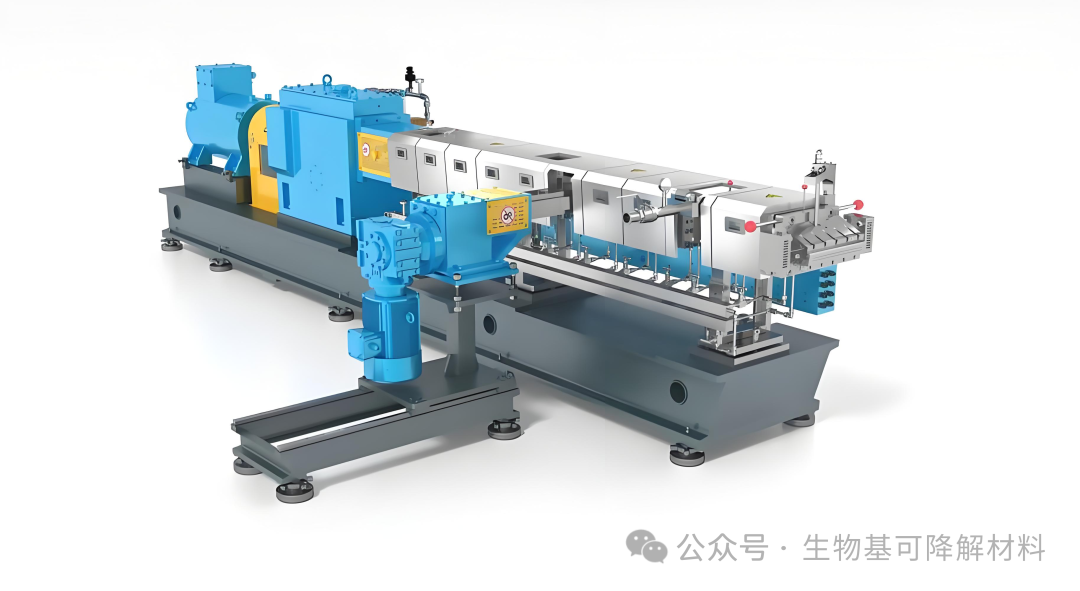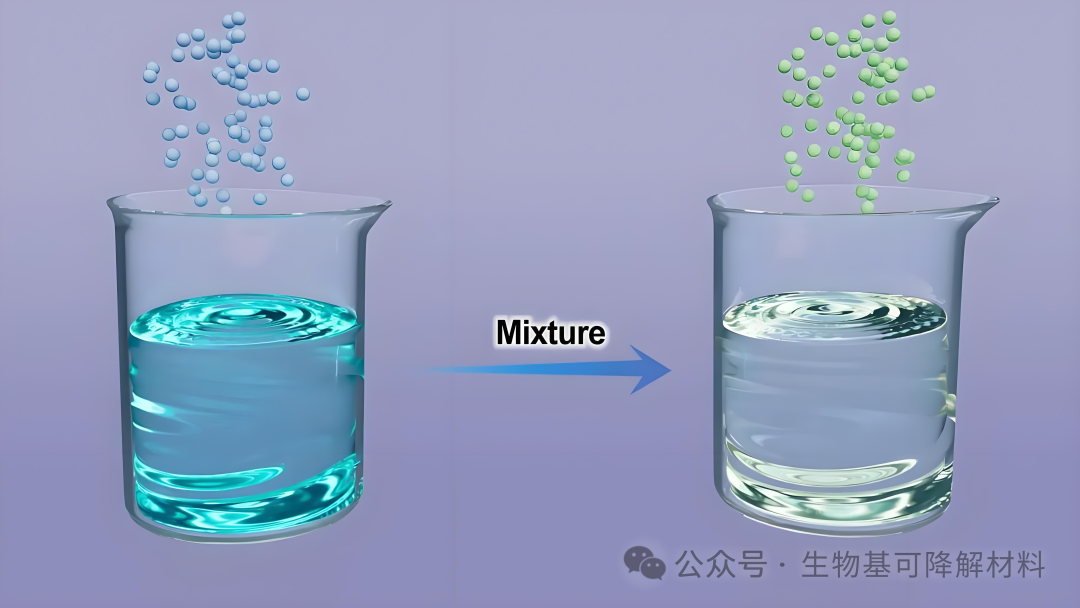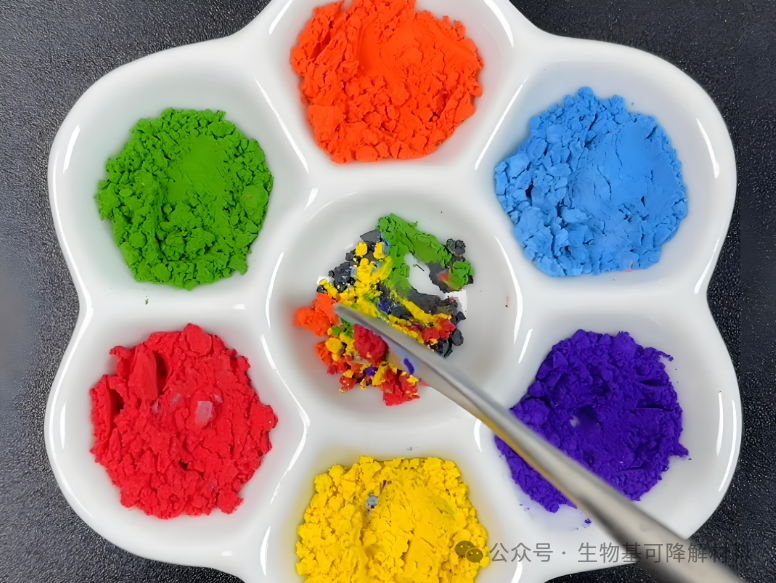Did You Know? There Are Three Methods for Physical Modification of Polymer Materials!
In the field of polymer material processing, modification is an extremely common operation, especially in the bio-based biodegradable materials industry. Bio-based biodegradable materials uphold the concept of environmental protection, combining bio-based sources with degradable properties, which sounds almost perfect. However, in practical applications, various challenges are often encountered, so in most cases, modification treatment is required.
According to whether the substance undergoes a change, modification can be divided into physical modification and chemical modification. Among them, physical modification is relatively simple and mainly relies on physical interactions to achieve blending, that is, through the method of physical blending modification. Depending on the specific treatment method, physical blending modification can be further subdivided into three types: melt blending, solution blending, and powder blending (also known as dry blending). Below, we will take a closer look at these three methods.
Melt blending: the most commonly used method in industry
Melt blending is one of the most commonly used methods for blend modification. During the operation, equipment such as extruders is used to heat the materials above their melting points, allowing the components to mix uniformly in a viscous flow state to produce a homogeneous polymer melt blend. This is followed by cooling, crushing, or pelletizing. For example, in the modification of bio-based biodegradable material polylactic acid (PLA), melt blending is often employed with other materials to improve its properties.

Advantages:
Wide applicability, capable of processing almost all thermoplastic polymer materials, especially suitable for the industrial production of bio-based biodegradable materials.
High mixing efficiency, good molecular chain mobility in the molten state, combined with the shearing force of the equipment, enables uniform dispersion.
Continuous production, suitable for large-scale mass production, and highly compatible with industrial production lines.
Insufficiency:
High temperatures may cause thermal degradation of certain materials, affecting their performance.
High energy consumption is required to maintain a molten state through continuous heating.
It requires high standards for equipment, with precise control of temperature and shear force; otherwise, uneven mixing or material degradation is likely to occur.
Solution blending: Common methods used in the laboratory
The operational logic of solution blending is "dissolve first, then mix, and finally remove the solvent." Specifically, two or more polymer materials are dissolved in a common solvent (such as certain organic solvents or water), stirred to form a homogeneous solution, and then the blend is precipitated by evaporating the solvent or adding a non-solvent. The final product is a solid blended material.

Advantages:
Good mixing uniformity, with molecular chains in the solution fully extended, enabling molecular-level dispersion; suitable for preparing high-performance composite membranes and similar products.
The operating temperature is low, avoiding damage to thermosensitive bio-based materials caused by high temperatures.
Suitable for small-scale laboratory research, capable of precisely controlling component proportions.
Insufficient:
The use of a large amount of solvent not only increases costs but may also remain in the material, affecting biological safety.
The recovery and treatment of solvents are complex, and improper handling can cause environmental pollution, which contradicts the eco-friendly concept of biodegradable materials.
Low production efficiency makes it difficult to achieve large-scale industrial production, and it is mostly used in special fields (such as medical degradable coatings).
Powder Blending: A Simple Method of "Grinding and Dry Mixing"
Powder blending is the process of mixing two or more different types of fine powder polymers in various common plastic mixing equipment to form a uniformly dispersed powder polymer. During the mixing process, various necessary plastic additives can also be added. The polymer blend obtained from powder mixing can, in some cases, be directly used for compression, calendering, injection, or extrusion molding, or it can be extruded and pelletized for later molding.

Advantages:
Simple equipment, easy operation, no need for high temperature or solvents, low initial investment cost.
Low energy consumption, only requires mechanical stirring, suitable for small-scale production or material pretreatment.
Low thermal stability requirements for materials avoid the risk of high-temperature degradation.
Shortcomings:
Poor mixing uniformity, only achieving particle-level mixing, prone to component agglomeration, affecting the final product performance.
The scope of application is limited, suitable only for materials that can easily be made into powder, and not very suitable for materials with high toughness that are difficult to crush.
Powder is prone to becoming airborne, which may lead to raw material wastage and operational environment issues.
Translate the above content into English and output the translation directly without any explanation.
Melt blending: melting the materials before mixing.
Solution blending: Dissolve the materials and then mix.
Powder blending: Crush the materials into powder and then mix.
The above describes the three common blending methods in the physical modification of polymer materials. Each of them has its own unique advantages, disadvantages, and applicable scenarios.In practical applications, it is necessary to choose the appropriate method based on material properties (such as heat resistance and solubility), production scale, and performance requirements. Sometimes, multiple methods are combined (for example, first powder blending and then melt blending) to achieve the best modification effect.
【Copyright and Disclaimer】The above information is collected and organized by PlastMatch. The copyright belongs to the original author. This article is reprinted for the purpose of providing more information, and it does not imply that PlastMatch endorses the views expressed in the article or guarantees its accuracy. If there are any errors in the source attribution or if your legitimate rights have been infringed, please contact us, and we will promptly correct or remove the content. If other media, websites, or individuals use the aforementioned content, they must clearly indicate the original source and origin of the work and assume legal responsibility on their own.
Most Popular
-

List Released! Mexico Announces 50% Tariff On 1,371 China Product Categories
-

Nissan Cuts Production of New Leaf EV in Half Due to Battery Shortage
-

New Breakthrough in Domestic Adiponitrile! Observing the Rise of China's Nylon Industry Chain from Tianchen Qixiang's Production
-

Dow, Wanhua, Huntsman Intensively Raise Prices! Who Controls the Global MDI Prices?
-

Mexico officially imposes tariffs on 1,400 chinese products, with rates up to 50%






